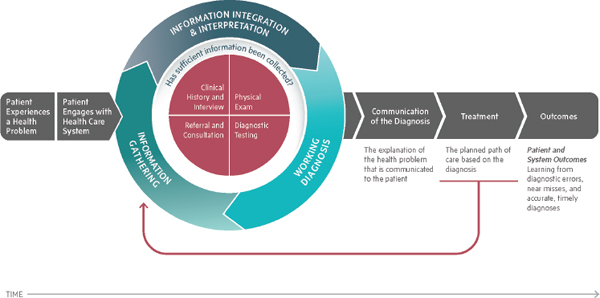What Is Differential Diagnosis Process

Differential diagnosis ensures that doctors consider all possibilities before they make a diagnosis for a patient s illness.
What is differential diagnosis process. It enables appropriate testing to rule out possibilities and confirm a final diagnosis. That process of elimination is called differential diagnosis ultimately they will be left with one diagnosis and that s the one they give you. A differential diagnosis is used to help diagnose physical or mental health disorders that cause similar symptoms. Differential diagnosis is the process of determining a specific diagnosis by systematically comparing similar diagnoses.
This phase of the diagnostic process is arguably the most critical because errors that occur during the earlier steps history exam symptom evaluation are compounded and result in a differential diagnosis that is either too narrow or simply off target. Typically clinicians will consider more than one diagnostic hypothesis or possibility as an explanation of the patient s symptoms and will refine this list as further information is obtained in the diagnostic process. This process can be divided into six steps. Differential diagnosis generating a differential diagnosis that is developing a list of the possible conditions that might produce a patient s symptoms and signs is an important part of clinical reasoning.
The working diagnosis may be either a list of potential diagnoses a differential diagnosis or a single potential diagnosis. Then one by one using those same clues they will begin to narrow down the list by finding clues that don t fit. During a health history you ll be asked about your symptoms lifestyle and previous health problems. Depending on items like medical history symptoms test results own medical knowledge and or input from colleagues doctors will usually come up with a handful of possible diagnoses for a particular condition.
It s based off of the facts obtained from your symptoms medical history basic laboratory. Most differential diagnoses include a physical exam and a health history. Differential diagnostic procedures are used by physicians to diagnose the specific disease in a patient or at least to eliminate any imminently life threatening conditions. How will my provider make a differential diagnosis.
It is important to include uncommon as well as common. Differential diagnosis that is the creation of a list of suspected diseases is important as it guides us in looking for these diseases in a patient during diagnosis. If a disease is not included in differential diagnosis it is not likely to be diagnosed.


















